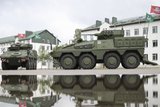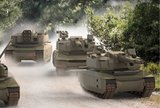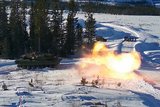Four obstacles British Army will face to improve its ground fleet
Boxer is one of the main ground systems the British Army will operate (Photo: British Army)
The British Army has been seeking ways to improve the commonality of its ground vehicles and, as per the MoD Land Industrial Strategy (LIS), it plans to reduce the number of core military platforms from 35 unique land platform types, 400 variants and 26 different engine types to 15 vehicle families by 2035.
As the numbers above show, the broadly heterogeneous British Army vehicle fleet poses several operational issues to the service and requires an extensive logistical effort.
A spokesperson for the UK MoD told Shephard that the core vehicles of the future will feature ‘much greater modularity, commonality’ and open architectures ‘to support
Already have an account? Log in
Want to keep reading this article?
More from Land Warfare
-
![Hungary set to begin using Hero 400 loitering munitions]()
Hungary set to begin using Hero 400 loitering munitions
Developed by Israel's Uvision and with systems being sold in the thousands to multiple European NATO countries and the US, the Hero family of loitering systems is also in production in the US and Italy, the latter through Rheinmetall.
-
![Croatia orders Leopards and CAESAR howitzers as Lithuania orders more CAESARs]()
Croatia orders Leopards and CAESAR howitzers as Lithuania orders more CAESARs
The Leopard is becoming the tank of choice in central and eastern Europe as Croatia joins Lithuania, the Czech Republic and Hungary in ordering the platform. Lithuania and Croatia have also signed for CAESAR howitzers.
-
![Light Reconnaissance Strike – enabling a vital mission set (Studio)]()
Light Reconnaissance Strike – enabling a vital mission set (Studio)
A new system-of-systems concept will unlock digital integration of sensors and weapons for Light Forces, allowing them to shape the battlefield environment on their own terms and upgrade legacy platforms.
























